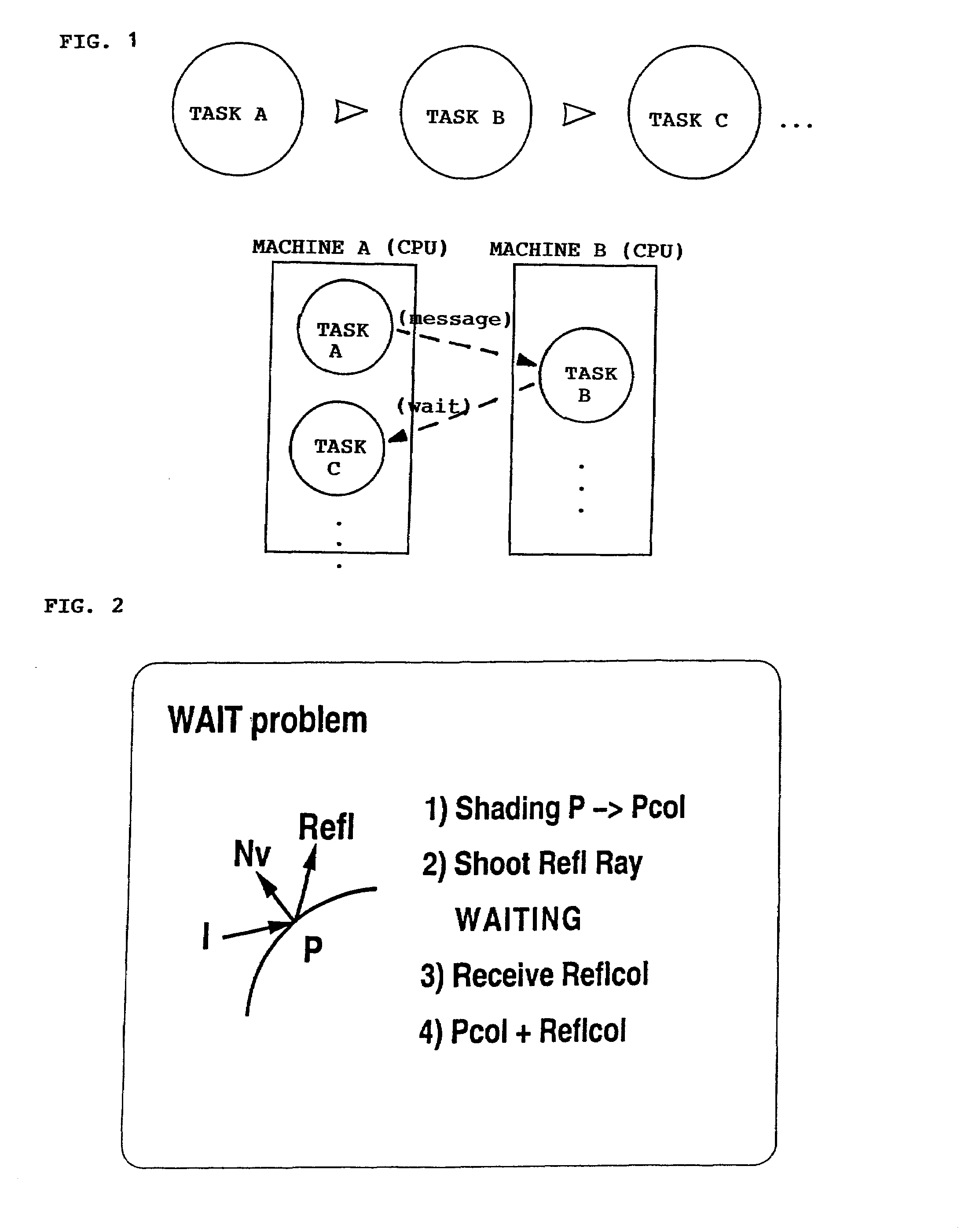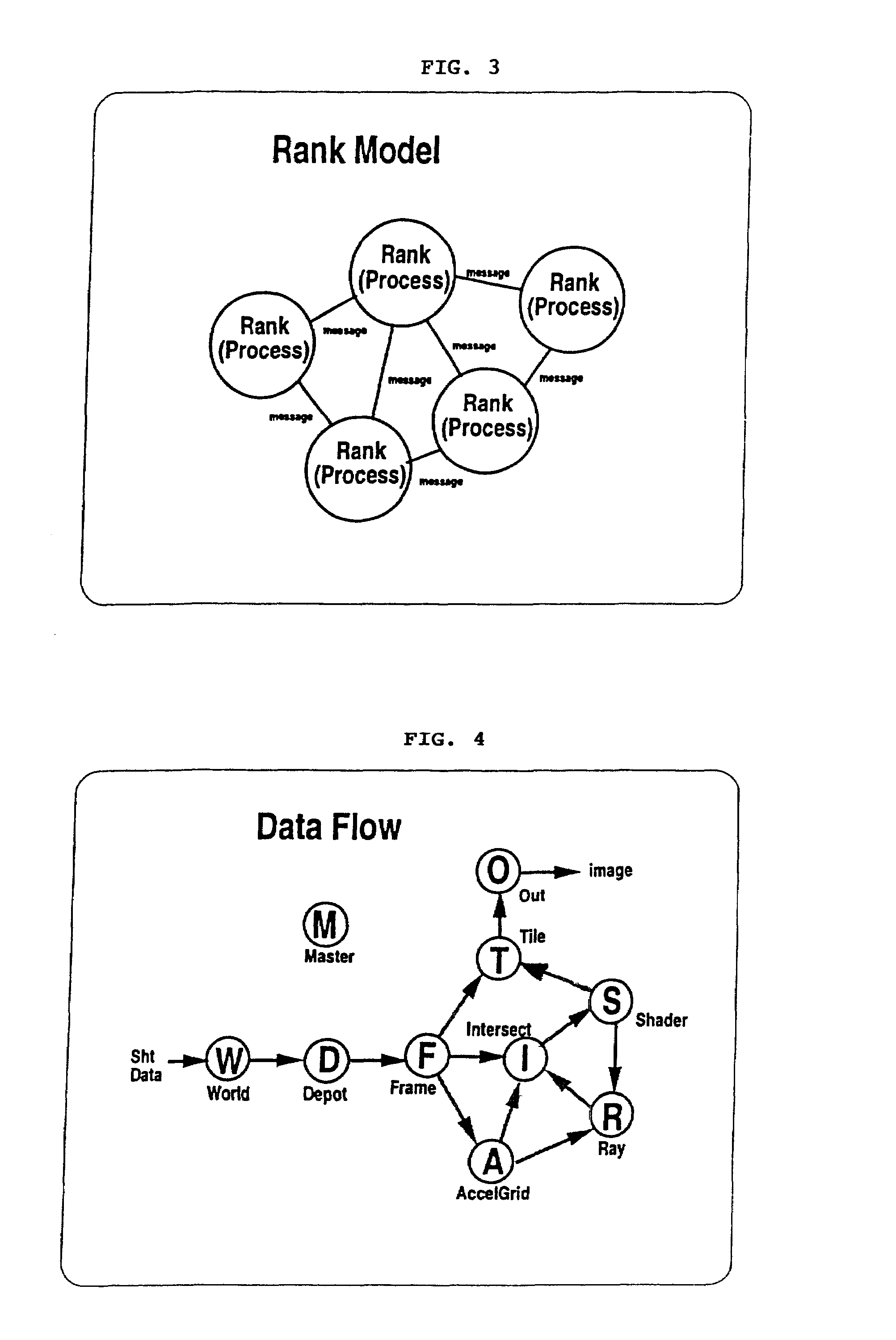Parallel object task engine and processing method
a task engine and parallel object technology, applied in the field of parallel object task engine and processing method, can solve the problems of data not fitting data may not fit on a single workstation, and the data required to generate images has grown
- Summary
- Abstract
- Description
- Claims
- Application Information
AI Technical Summary
Problems solved by technology
Method used
Image
Examples
Embodiment Construction
[0038]A preferred implementation of the parallel processing method and system of the present invention is described in detail below using the example of computer graphics rendering performed in a parallel processing environment of the message passing type. However, it is to be understood that the general principles of the invention have broad applicability to analogous types of parallel processing environments and computationally intensive applications.
[0039]In the example described in detail below, a computer graphics rendering application is performed in a UNIX™ programming environment. For example, the CG rendering application may be performed on SGI™ workstations running IRIX™ operating systems, as are available commercially from Silicon Graphics Inc., of Mountain View, Calif., or even on standard IBM PC-compatible computers running the LINUX™ operating system.
[0040]A CG development platform is used to create an overall CG media program and accompanying database of scenes and ob...
PUM
 Login to View More
Login to View More Abstract
Description
Claims
Application Information
 Login to View More
Login to View More - R&D
- Intellectual Property
- Life Sciences
- Materials
- Tech Scout
- Unparalleled Data Quality
- Higher Quality Content
- 60% Fewer Hallucinations
Browse by: Latest US Patents, China's latest patents, Technical Efficacy Thesaurus, Application Domain, Technology Topic, Popular Technical Reports.
© 2025 PatSnap. All rights reserved.Legal|Privacy policy|Modern Slavery Act Transparency Statement|Sitemap|About US| Contact US: help@patsnap.com



